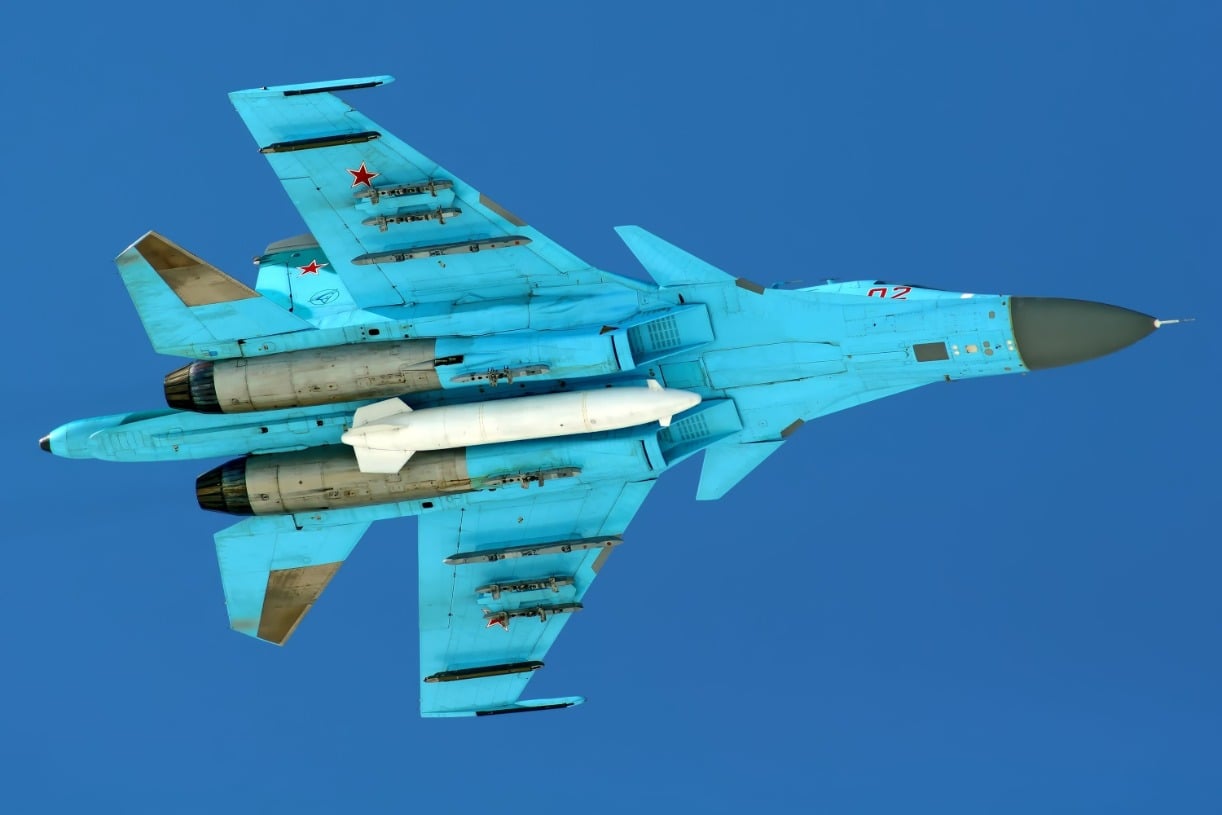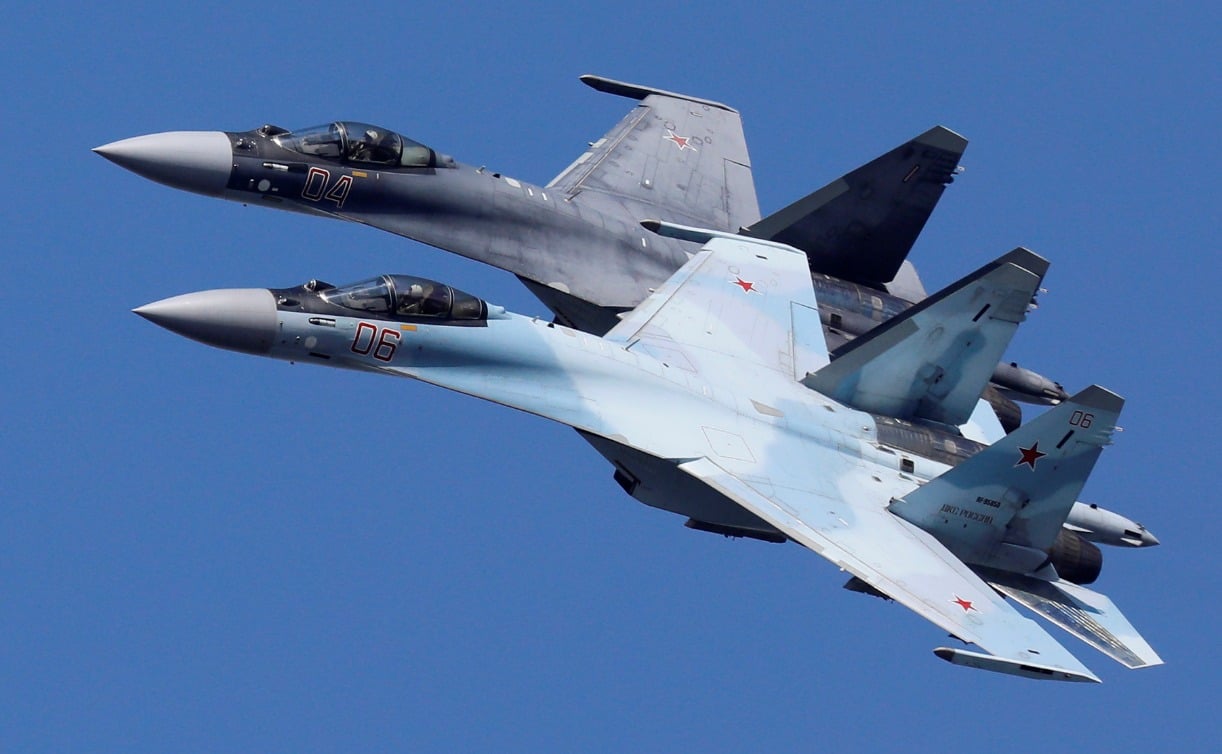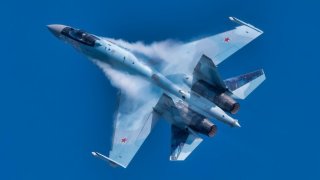Russia's Su-35 Flanker-E Fighter Can't Stop Falling Out of the Sky in Ukraine
Russia's Su-35 fighter jet, dubbed "Fulcrum-E" by NATO, has been touted as a formidable aircraft but has shown significant vulnerabilities in the ongoing Ukraine conflict.
Summary and Key Points: Russia's Su-35 fighter jet, dubbed "Fulcrum-E" by NATO, has been touted as a formidable aircraft but has shown significant vulnerabilities in the ongoing Ukraine conflict.

-Despite its advanced features, such as sophisticated radar systems, improved engines, and stealth capabilities, the Su-35 has not lived up to its reputation in combat.
-Reports indicate that at least six Su-35s have been lost in the war, raising questions about its effectiveness.
-The aircraft's dependence on Western technology and Russia's struggling defense industry have compounded its issues, suggesting the Su-35 may not be as advanced as claimed.
Russia's Su-35: Advanced Fighter or Paper Tiger?
While Russia often touts its Su-35 fighter as a force to be reckoned with in the skies, the jet appears to be paper tiger.
The platform that NATO has designated the “Fulcrum-E” is not really comparable to the American-made F-35 Lightning II or even the F-16 Fighting Falcon like the Kremlin purports. Although the Su-35 does possess some of the same characteristics of fourth- and fifth-generation jets, including advanced radar systems, improved engines, and greater stealth capabilities, the airframe has suffered greatly in Russia’s ongoing invasion of Ukraine.
Regardless of specs and capabilities on paper, a fighter’s true prowess is measured in combat. According to the open-source intelligence tracker Oryx, Russia’s Air force has lost at least half a dozen of its Su-35s in the war in addition to two dozen Su-34s.
A brief overview of the Fulcrum-E fighter:
Like many of Moscow’s more modern fighters, the Su-35 was derived from the Soviet-made Su-27 platform.
During the Cold War, Soviet engineers conceptualized the airframe as a highly maneuverable jet capable of going head-to-head with America’s fleet of fourth-generation airframes. Specifically, the USSR required a new platform that could counter the McDonnell Douglas F-15 Eagle and Northrop Grumman F-14 Tomcat.
The first Su-35 prototype (formerly known as the Su-27M) embarked on its maiden flight right before the collapse of the USSR in the late 1980s.

As detailed by the platform’s manufacturer United Aircraft Corporation (UAC), the Su-35 is a beast in the skies and combines “the qualities of a modern fighter (super-maneuverability, superior active and passive acquisition aids, high supersonic speed and long range, capability of managing battle group actions, etc.) and a good tactical airplane (wide range of weapons that can be carried, modern multi-channel electronic warfare system, reduced radar signature, and high combat survivability).”
Dissecting the Su-35’s shortcomings:
As mentioned previously, the Flanker E is robust on paper. The airframe can be fitted with a range of lethal weapons, including air-to-air missiles, air-to-ground missiles, and anti-ship missiles. Notably, the Su-35 can reach a top speed of Mach 2.5 (times the speed of sound) and is equipped with a sophisticated cockpit information control system. Despite these capabilities, Ukraine keeps on shooting Su-35s from the skies.

Some analysts assert that the Su-35 could be failing to perform up to standard due to Russia’s declining defense industry and the platform’s reliance on Western technology. Moscow is struggling to replenish its rapidly depleting stockpiles of resources amidst its ongoing invasion. Additionally, many key components of the Flanker E’s design are actually Western devices. Considering the hefty sanctions the West imposed, Russia is unable to secure the components necessary to maintain its Su-35s properly. Perhaps most importantly, the Kremlin has a history of over-exaggerating the capabilities of its military systems. Maybe the Su-35 simply is not the “fourth-generation ++” platform Moscow would like to boast it represents.
About the Author: Maya Carlin
Maya Carlin, National Security Writer with The National Interest, is an analyst with the Center for Security Policy and a former Anna Sobol Levy Fellow at IDC Herzliya in Israel. She has by-lines in many publications, including The National Interest, Jerusalem Post, and Times of Israel. You can follow her on Twitter: @MayaCarlin.
Image Credit: Creative Commons and Shutterstock.


